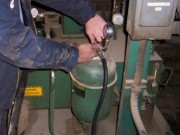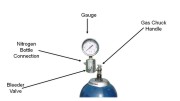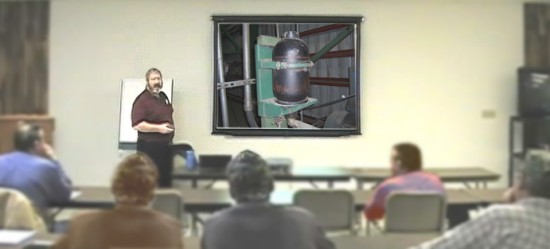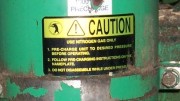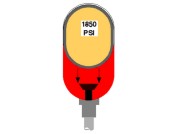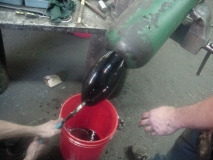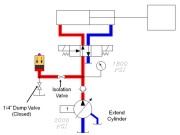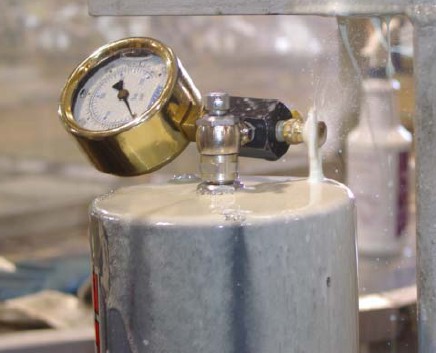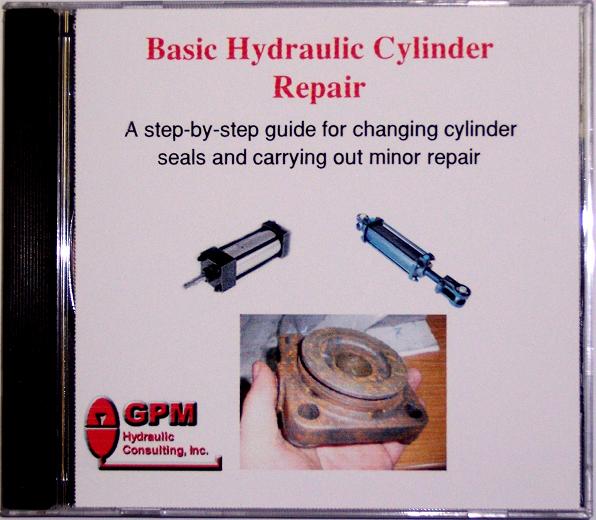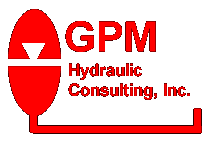
P.O. Box 1376
Monroe, GA 30656
(770) 267-3787 gpm@gpmhydraulic.com
For an archive of past newsletters, please visit:
http://www.GPMHydraulic.com/newsletter_archive/
CLICK HERE to send this newsletter to a friend!
|
'Troubleshooting Hydraulics' Newsletter |
||||
|
||||
|
In This Issue |
||||
|
2. What You Don't Know About Hydraulic Accumulators Can KILL You! ***NEW!*** Accumulator Safety DVD 3. New Machines - Easier or Harder to Troubleshoot? 4. Call GPM for Emergency Hydraulic Troubleshooting 5. 2009 Public Maintenance Hydraulic Troubleshooting Workshop Schedule |
 By Jack Weeks
By Jack Weeks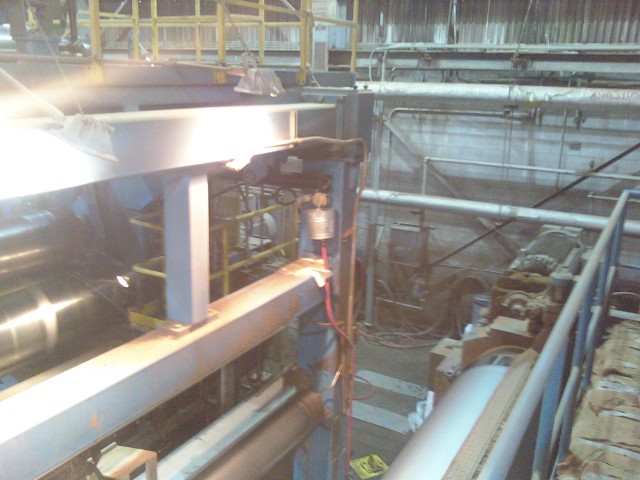
Bad Installation
The most common cause of leaks is a bad
installation. We recently developed a class specifically for machine
installers titled "Leak-Free Hydraulic Installation".
What we were finding on many of our consulting calls were machines that
leaked from the time they were initially installed. This is no rare
occurrence. It would never be tolerated in any other hydraulic
application. If we buy a car and wake up the next morning to find a
pink puddle under it, we will be making an immediate trip back to the
dealer from which it was purchased. If an airplane lands and a
hydraulic leak is discovered during a routine inspection, it will be
repaired before it is allowed back in the air. But for some reason,
multimillion-dollar hydraulic machines used in industrial applications are
expected to "leak a little".
This is slowly changing. Mostly because of environmental
concerns. Whether you believe it is a good thing or a bad thing, EPA
standards are getting tougher and fines are increasing. And we can
expect this trend to continue for the foreseeable future. Also,
plants are examining ways to cut operating costs. To avoid the fines
and cut operating costs, sealing technologies used for reliable aviation
and mobile hydraulics are finding their way into industrial machines.
The total cost of a hydraulic leak (see our May
2009 Newsletter) are much more than the cost of the oil. And
many industrial facilities are beginning to recognize this. So a
little time and money is being invested early on to avoid them.
Training installers and technicians is the biggest single action that can
be taken to address leaks. Here are a few of the more common errors
made during installation and repair:
- Use the Correct Schedule of Pipe - Schedule 40 pipe is suitable for most suction and return lines, but the greater force developed in pressure lines requires the use of schedule 80 or 160. Use a pipe chart to determine the proper pipe schedule. Do not rate pipes according to maximum system pressure. Shock spikes can easily be thousands of PSI above that.
- Avoid Unnecessary Bends and Elbows - Every bend in a length of tubing or elbow in a pipe adds resistance to the machine, increasing heat and turbulence, increasing the likelihood of a leak. The more bends or elbows, the larger the tubing or pipe size should be to lower the fluid velocity and limit heat and turbulence. Again, use pipe charts.
- Use the Connection that is Best for the Installation - Never use NPT connections - they are the least reliable. There is a proper connection type for every application.
- Use Non-Corrosive Pipe When Pipes are Exposed to Moisture - Even the best connections serve no purpose if the pipe corrodes.
- Proper Clamping - Hydraulic clamps should have resilient inserts to help absorb shock. Also, they should be welded, not bolted, and spaced properly. Every 3 feet for 1/4 - 1/2" tubing, every 4 feet for 5/8 - 7/8", every 5 feet for 1" and every 7 feet for 1-1/4" and above. On long runs, use a "U" bend with a clamp in the middle to help avoid problems from expansion and contraction.
- Get Good Flares - check after flaring to ensure that the outside flare diameter does not exceed the outside sleeve diameter. Likewise, it should not be less than the inside taper of the sleeve. Also check for nicks, burrs, cracks and splits. While these may not cause the flare to leak initially, eventually they will.
- Proper Torque Settings - Stop laughing. It takes no longer to use a torque wrench than it does to use any other wrench when installing piping, tubing and components. And all of these connections have torque recommendations - use them and avoid leaks. Proper torque settings often make the difference between a system that leaks and one that doesn't.
- Sealants - Pipe dope and teflon tape may hold when installed, but they are not going to stay leak-free. And both risk contaminating the oil. The best we have found are Flaretite seals. The Flaretite Seal is a stainless steel stamping, designed with multiple, concentric sealing rings. The entire seal is coated with a dry-to-the-touch, baked-on Loctite™ sealant. They make seals that fit all standard JIC/SAE/JIS flare fittings, hydraulic and pneumatic. And in case you are wondering, the Flaretite people don't pay us a dime to tell you that - we recommend themn because we know them to be superior (though any Flaretite people reading this are encouraged to donate for the plug...).
- Cut Hoses to the Proper Length - Most people are surprised to learn that hoses should be no more than about four feet in length except for unusual circumstances such as traveling cylinders. It is a rare plant we have ever visited that did not have hoses that were too long. And they grow over time as they are replaced. Never is a replacement hose cut shorter than the one being replaced - it's always cut longer.
- Hoses Should Not Touch Each Other or Any Surface - A hose that rubs against another hose is nothing more than a leak waiting to happen. Use protective covers when touching another hose or a surface is unavoidable. One of the best protective coverings is hose material cut and anchored to the hose at the point of impact with sturdy cable ties.
- Get a Good Crimp - Use a good crimping tool that feels good to you. You will never get consistently good crimps with a tool that does not feel good.
- Case Drain Lines Connect Directly to Tank - Never plumb a case drain line to a return line. Return lines have enough turbulence to damage a pump shaft seal.
- Pressure Settings and Shock - Excessive pressure results in excess force. Over time, pressures turned up too high will cause a system to leak in addition to causing excess wear on components and wasting energy.
- Cylinder Rod Seals are Not 100% Efficient - particularly in unfriendly environments such as dusty or moist areas, a protective boot or cover should be used. The best kind are the type that make an air-tight seal. If they don't, they will draw contaminants into them as the cylinder extends.
These are just a sampling of the topics we cover in depth in our "Leak-Free Hydraulic Installation" class. Eliminating leaks becomes more critical every year. Remember that a well designed system put together with quality components by properly trained personnel using proper tools and procedures is the least costly system.
|
Another trend is toward electro-hydraulic installations. More sophisticated electronics allow for more accurate control of the machine as well as more efficient energy usage.
What does all of this mean to the hydraulic troubleshooter? It is becoming increasingly more important that you be able to read a hydraulic schematic and know how to use it as your most valuable troubleshooting tool. This has always been important, but it's becoming more critical as machines develop. You can't see inside a manifold. Problems can ONLY be diagnosed with a schematic. And unless you are familiar with electro-hydraulic controls, it becomes increasingly more difficult to determine whether you have an electric or a hydraulic problem. You need to have the proper test equipment and know how to use it effectively.
At GPM, we stay on top of new developments for our customers' sake. Our Maintenance Basic Hydraulic Troubleshooting course constantly evolves to keep up with the trends of technology and our customized classes offer the best troubleshooting techniques available for your specific machines. Our Troubleshooting Proportional Valves class is critical to understanding electro-hydraulic controls and when new technology appears, you can trust GPM to be ready to train you for it.
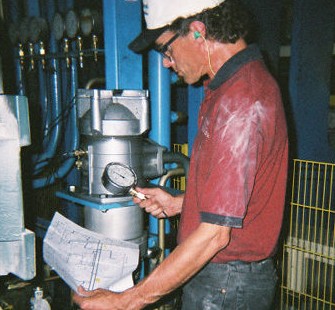
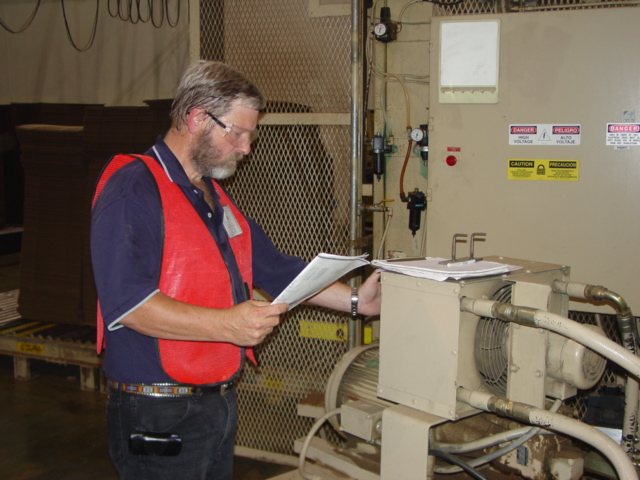
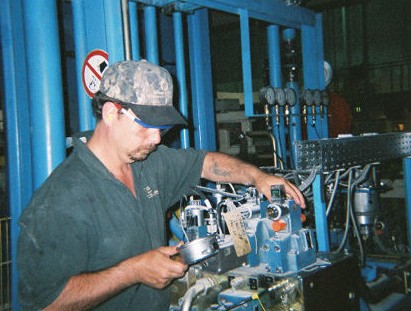
Nothing is more expensive than unscheduled down time. GPM’s customers know they can call whenever they have a troubleshooting issue they simply can’t resolve. With over 50 years experience dealing with hydraulic failures, our consultants have the resources to help troubleshoot whatever hydraulic problem you encounter. Whether you’re experiencing a total system outage, repeated component failure or just need a professionally designed preventive maintenance schedule, the consultants at GPM can help. Call GPM for
In-plant Troubleshooting
Leakage Problems
Pressure Settings
Shock Problems
Preventive
Maintenance Scheduling
Hydraulic Troubleshooting Manual Development
Startup
Consulting and Recommendations
Heat
Problems
Repeated
Component Failures
Speed Problems
Do you want to learn more about how GPM can help you? Go to http://gpmhydraulic.com/troubleshooting.htm
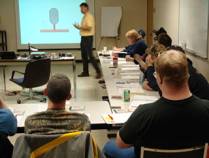
Maintenance Basic Hydraulic Troubleshooting
2009
3 Day Workshop
Registration
Fee Only $895.00 Per Person
Three
for the Price of TWO!
Every Third Registrant Attends for FREE!
Early Registration -
$845.00 For Confirmed Reservations
Booked 21 Days Prior to the Start of the Workshop
Call (770) 267-3787 To Register
Learn More About Our Maintenance Basic Hydraulic Troubleshooting Course
2010 Maintenance Basic Hydraulic Troubleshooting Schedule
Date
*Don't see your city listed? Call If You Would Like To See A Workshop Scheduled In Your Area!
(770) 267-3787
If you've found our newsletter informative and beneficial please click here to tell your co-workers and friends.
A step-by-step guide for changing cylinder seals and carrying out minor repair. The manual contains disassembly, inspection of parts, minor repair, assembly, examples of seal failures and their causes, hydraulic cylinder speeds, metric/inch conversion table, fluid power formulas, rod and piston groove diameters.
$24.99 + Shipping & Handling
Site Index
[Home] [Our Training] [Hydraulic Consulting] [Safety Webinars] [System Flushing] [Our People] [Downloads and Multimedia] [Testimonials] [Hydraulics Quiz] [GPM Store] [Upcoming Events] [Contact Us]
GPM Hydraulic Consulting,
Inc.
Box 1376
Monroe, GA 30655
(770) 267-3787



